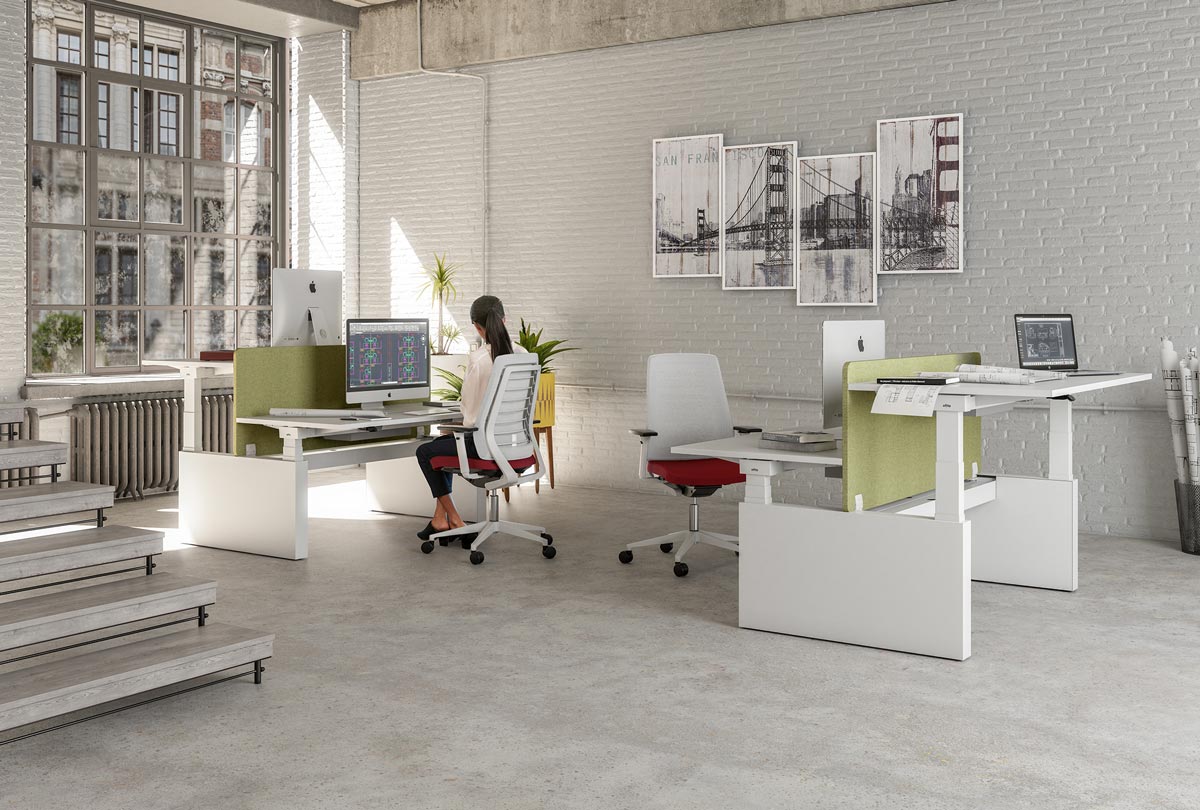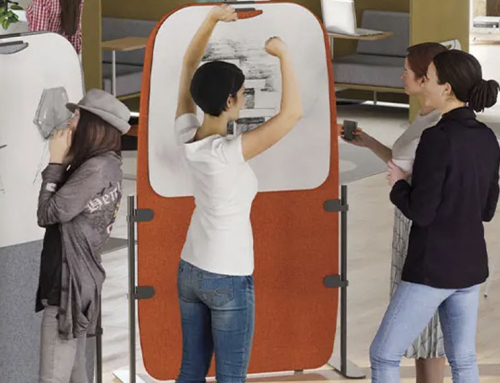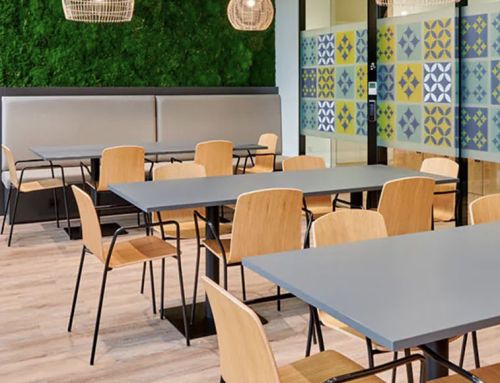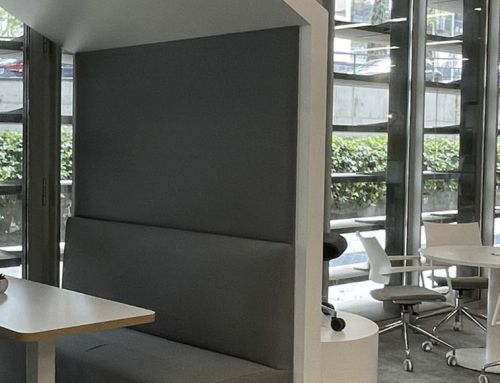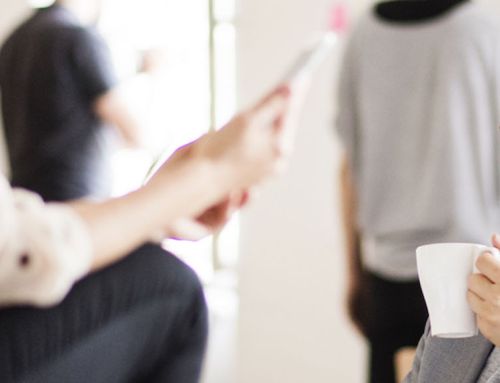A design based on caring for people (healthy offices); this is the aspect of offices that have reinvented their work environment aimed at responding to new work methodologies and new corporate cultures. New work spaces outstand for their absolute capacity to adapt and be modified depending on the changing needs of people, teams and/or the company.
The design of offices revolves around four axes: people, space, image/brand and technology. Today we want to focus on people, the real revolution of the design of work spaces. Impersonal traditional offices have given place to new more human work environments designed to care for the physical and emotional health of employees. Spaces that encourage also people to meet and favour intergenerational relationships. Companies look for human environments for the workplace.
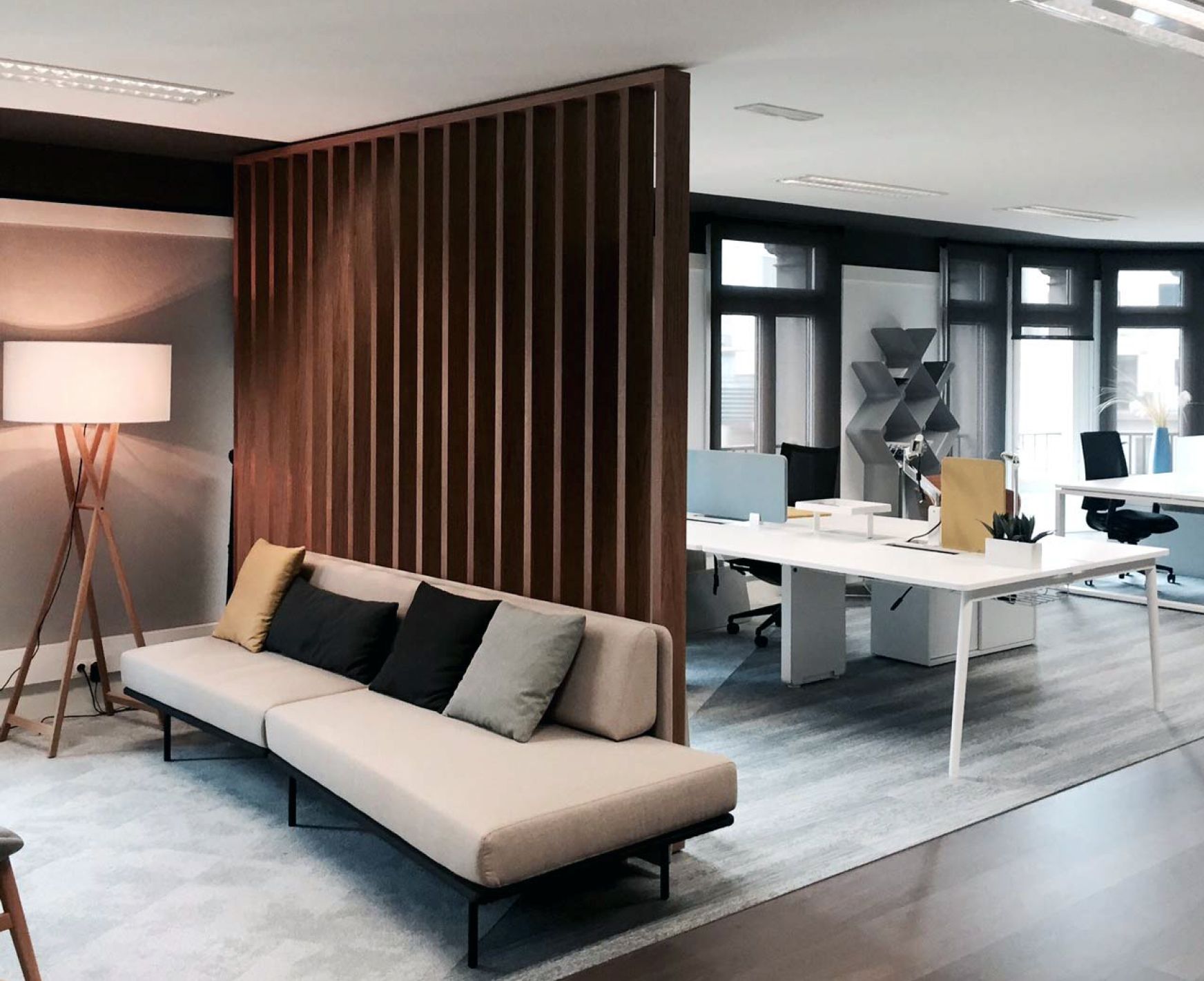
A space for each moment – Healthy offices
The relationship between people and the work environment has changed. Offices are no longer spaces where to sit in front of a computer but rather places allowing different work methodologies and most unique; every space is today a potential workspace.
Although it is not just a matter of how to work but rather of being able to choose where to work depending on the needs; from formal meetings to informal encounters, team work, remote collaboration or moments that require a certain level of privacy, concentration or relaxation. All of them are now found in a broad range of spaces where to work efficiently and which are easily reconfigurable for different uses and/or number of people.
This way we create team learning and working ecosystems that benefit both people and the company itself.
Physical and emotional health
Health and wellbeing of all people is the starting point for the design of offices that seek to create a human and comfortable environment.
Traditional areas of action that turn an organization into a healthy company are the adaptation of the space to maximize thermal, acoustic, olfactory and ergonomic comfort of people as well as the quality of air, the access to natural light and the promotion of healthy habits.
Under the WELL Certificate companies go one step ahead and can be recognised as “healthy”. They incorporate to their spaces friendly designs and equipment looking for greater physical and emotional comfort of users. In fact, home furniture and decoration elements have come to the office to stay.
With this same objective, the design of offices gives more importance to wood and warm colour palettes; they introduce biophilic design in a clear commitment to create more healthy and sustainable ecosystems and incorporate informal areas, gyms, reading areas and all type of leisure areas.
Designed according to this premise of placing people at the centre, work spaces have aligned –favouring them- with new HHRR policies of companies which today are more open, transparent and participative with leadership styles encouraging co-creation, communication, empowerment and collaboration.
These new spaces also promote more sustainable and healthy habits such as the more responsible consumption of paper with the installation of collective printing stations. Likewise, cold water stations are installed as well as vending machines with healthy products for a better diet or in order to avoid excessive inactivity, the furniture includes adjustable tables such as Multilevel and employees are encouraged to use different spaces of the office or to move from their tables.
Multilevel
Ergonomic furniture
Ergonomic furniture designed for the comfort of their users is essential in these new healthy offices. Tables, cabinets, sofas… have to be designed for the user to work in a correct position. The choice of chairs is especially important. A good office chair is the one that moves along with its user such as the Hara chair designed by Andreas Krob.
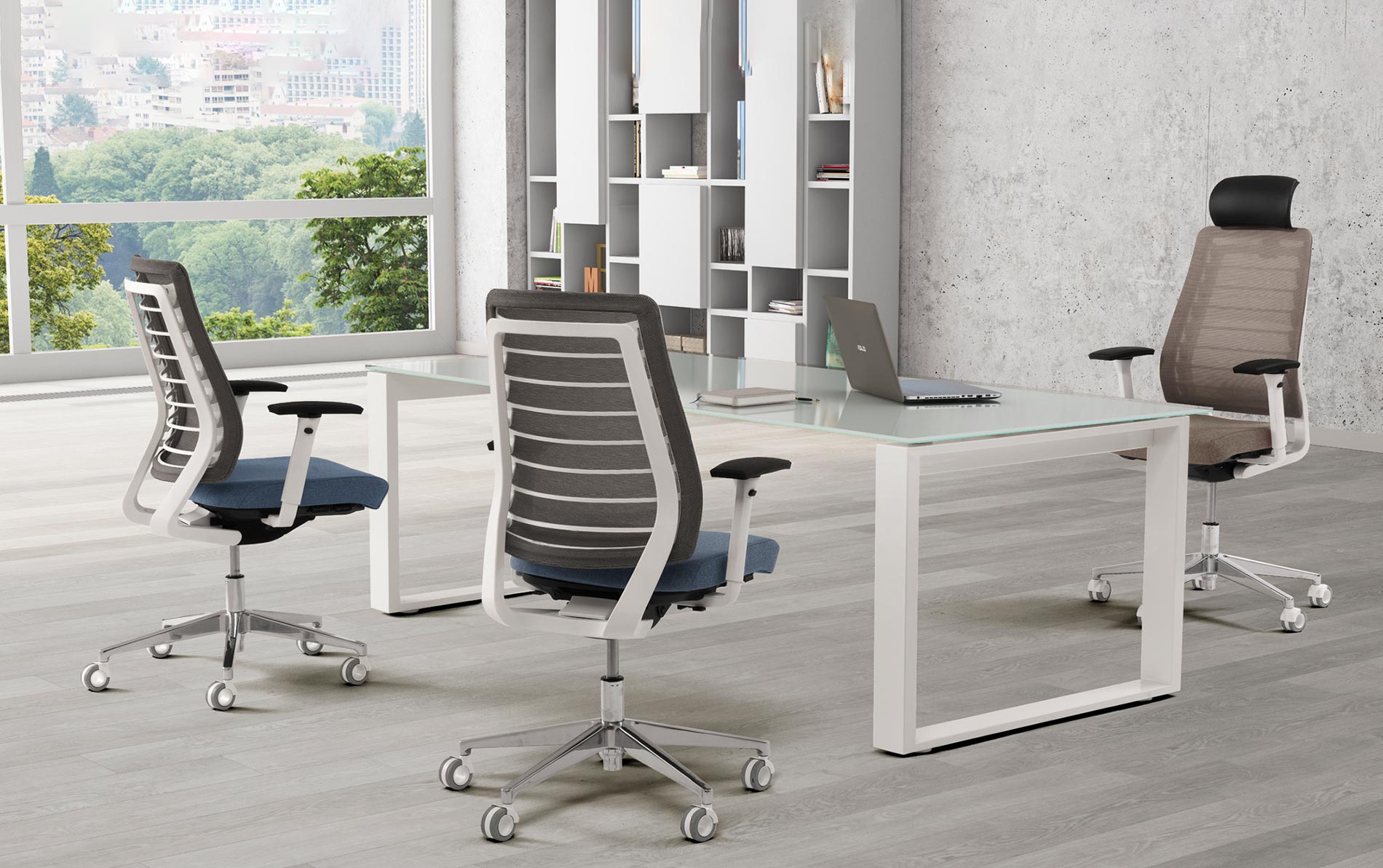
Collaborative areas represent 65% of Healthy offices
Human beings are social in nature; improving our emotional comfort goes through sharing with others. Renewal of spaces is also changing the way people relate to each other at work making collaboration flow naturally and transversally.
In fact according to the study “More than one” by Ofita collaborative areas have become the main characters of the new work spaces representing up to 65%.
This study analysed the types of meetings in order to create an appropriate design for each of these situations. Eight are the main meeting modalities: Convention, Meeting, Training, Team, Express Encounters, Brainstorming, Petit Comité and Visits.
